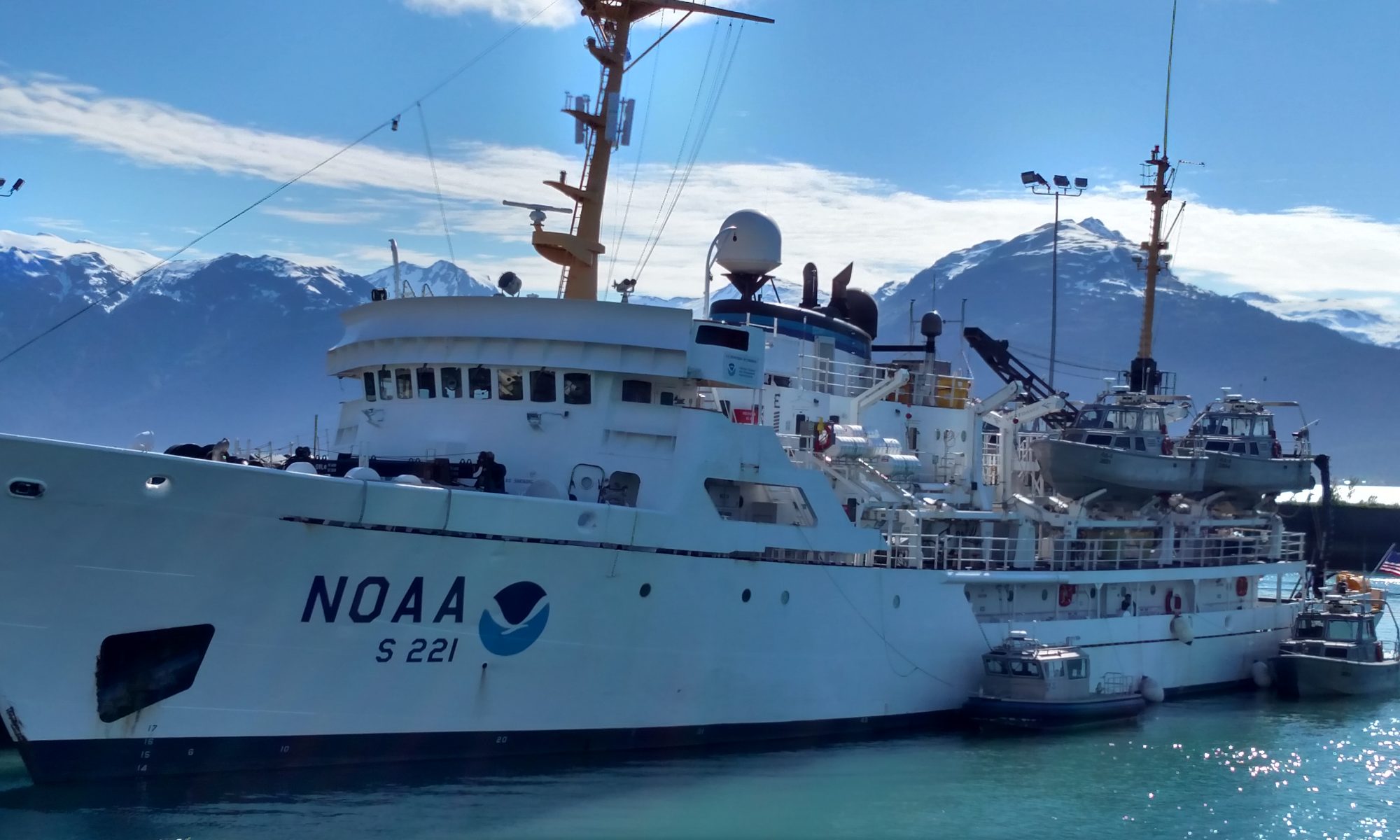NOAA Teacher at Sea
Dana Kosztur
Aboard NOAA Ship Pisces
April 5-18, 2018
Mission: SEAMAP Reef Survey
Geographic Area of Cruise: Gulf of Mexico
Date: April 17-25, 2018
Science and Technology Log
Safety is very important on NOAA vessels. We did various safety drills while I was on board. We did a fire drill and a man overboard drill. We also did an abandon ship drill where we reported to our assigned lifeboats. During one of these drills, I was required to put on a “Gumby” suit. This survival suit is designed to keep you from getting hypothermia if you are to be in the water for long periods of time. For another drill, I donned a blindfold and found my way out my room and to the outside deck. This drill was to simulate an emergency situation with no lights. It was pretty scary to walk through the boat in the dark.
The final day of fishing and camera drops proved to be awesome. We had lots of fish on camera and caught fish all four times we dropped lines. I was able to collect the measurements and samples from those fish without any extra guidance. The mission scientist recorded and observed, but they didn’t have to assist me. Their confidence in me was a pretty great feeling.
The video below is an example of the videos collected by both SatCam and RIOT Cam. These arrays have 6 cameras. The video is the view from these cameras stitched together. The top camera is not included in the panorama. The NOAA scientists use the videos to count fish species they study during the SEAMAP reef fish survey.
Personal Log
As we were docking, I had mixed emotions as we approached the harbor. I disembarked in Tampa, Florida. I was very excited to get back home but I knew my journey on Pisces was coming to an end. I am proud of myself for taking this trip. I am grateful for all the support from my family, friends, team teachers, and administration. I would not have been able to sail without their help. I learned so much more than I imagined and I will treasure the memories I made on this adventure. Being a Teacher at Sea increased my appreciation of Gulf of Mexico and I want to pass that on to my students.
Life at home has returned to normal. I returned back to school this week. I’ve spent a lot of time talking to my students about my experience aboard the ship. They have asked tons of questions. They are very interested in every aspect of my time at sea and loved all of the pictures and videos. I love that they are so engaged in the lessons this week. We are in the last month of school and it is often hard to keep the student’s attention. My Teacher at Sea tales and lesson plans have kept them focused and on task. They claim to have missed me and I, of course, missed them.
I do have a few pieces of advice for the others that have yet to embark on their Teacher at Sea journey.
- It is amazing. You will love it.
- Bring a water bottle and a backpack. I used both of these almost constantly.
- Talk to everyone on the ship. Every member of the vessel has valuable knowledge.
- Ask your students what they are the most curious about. After a brief overview of NOAA and the mission I was going on, I had my students write questions for me to get answered. It was a great way to gauge what they were most interested in and these also make great conversation starters.
Did You Know?
If there are not enough male grouper in a given area, the largest or dominant female will change from a female to male.







![file7-1[1] Cow on the plane](https://i0.wp.com/noaateacheratsea.blog/wp-content/uploads/2018/04/file7-111.jpeg?w=140&h=249&ssl=1)





































































